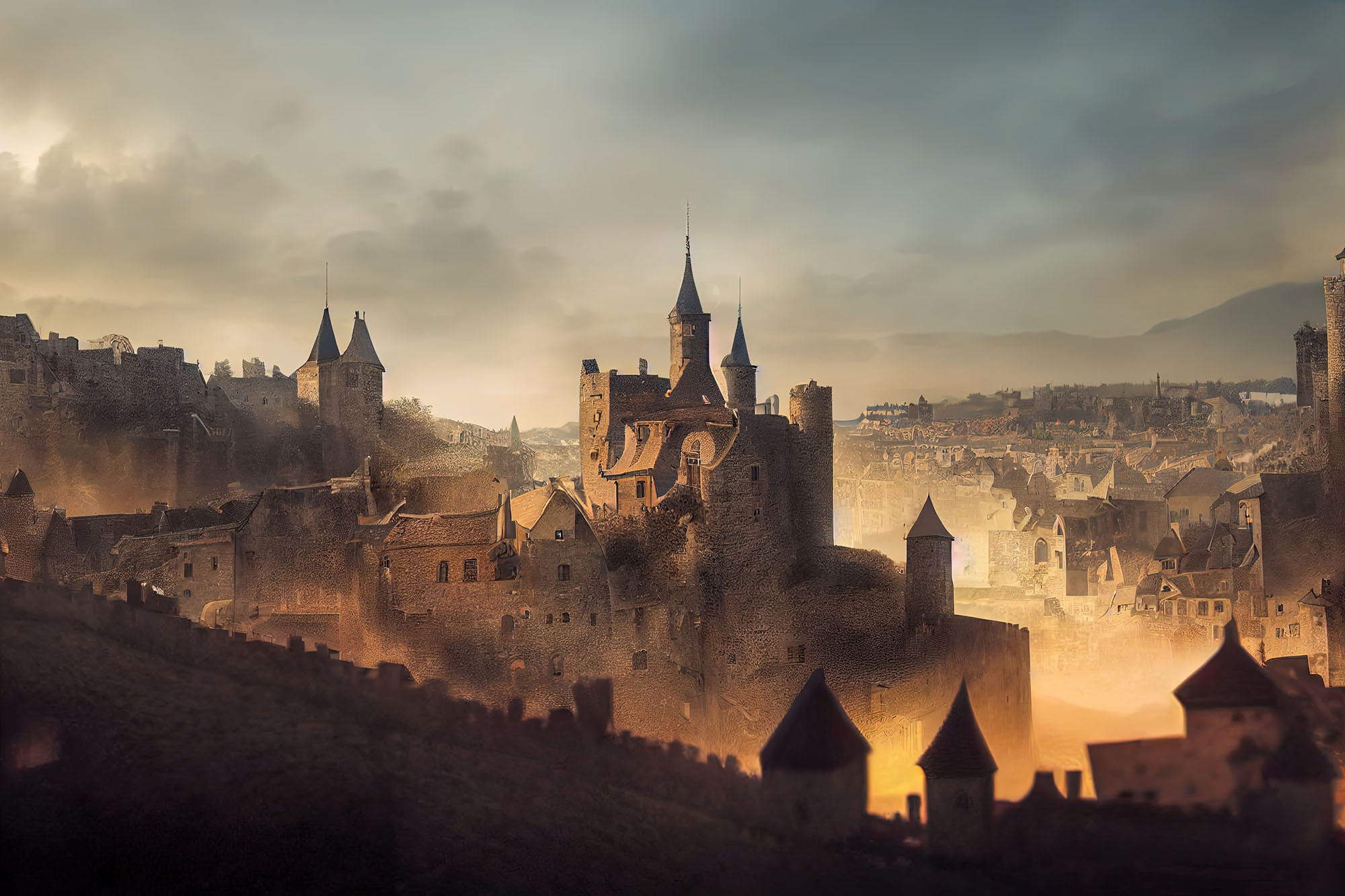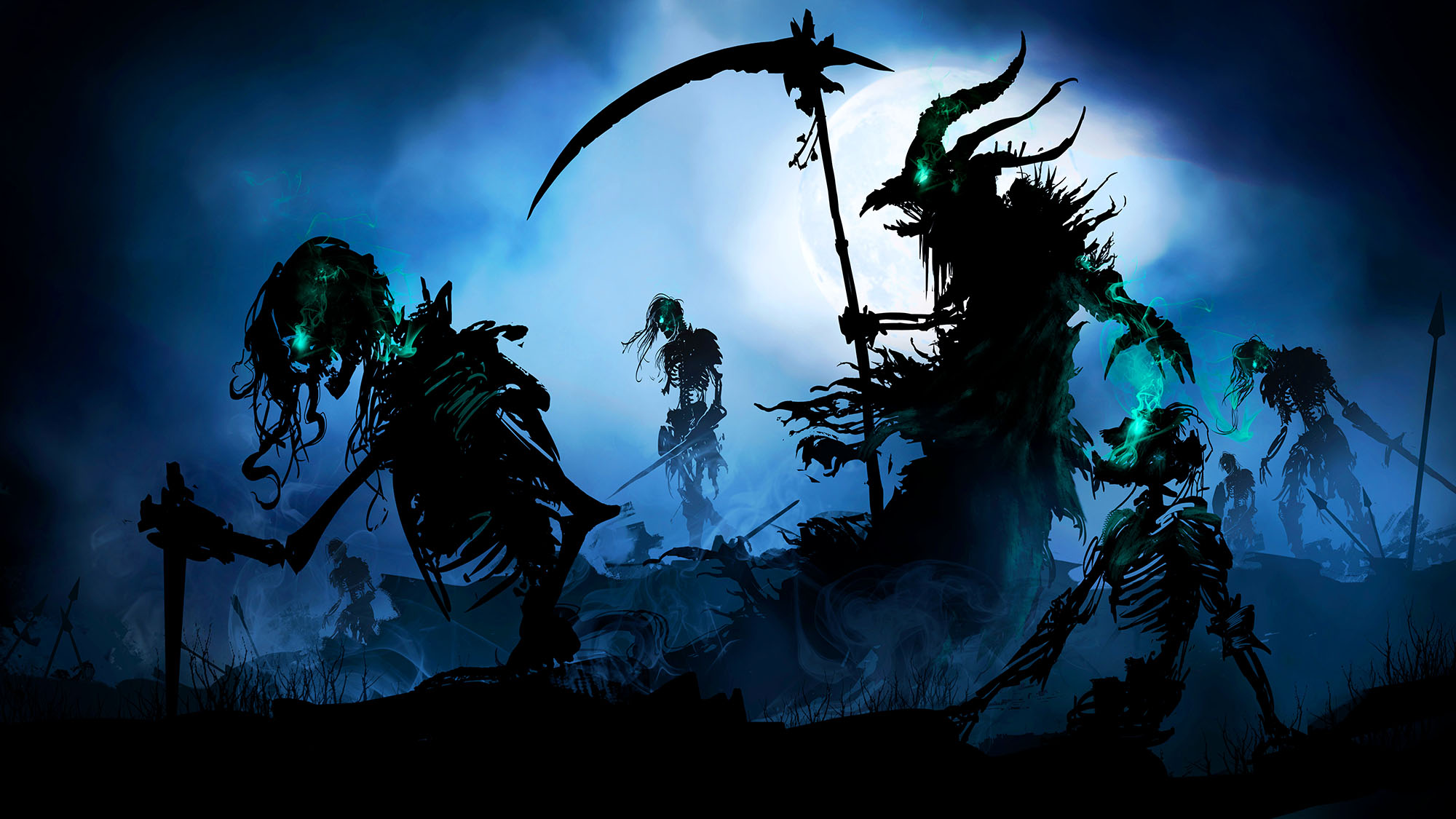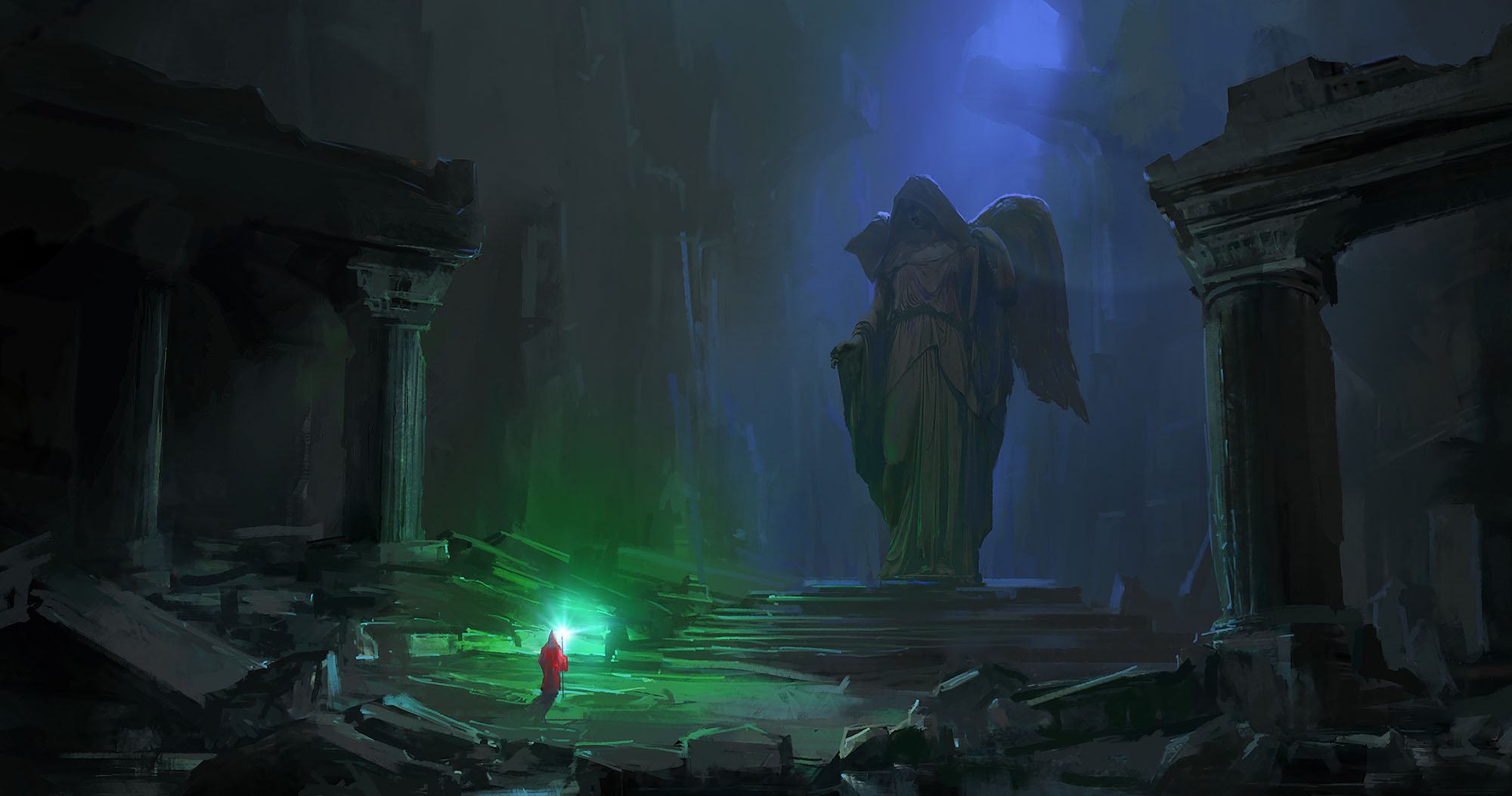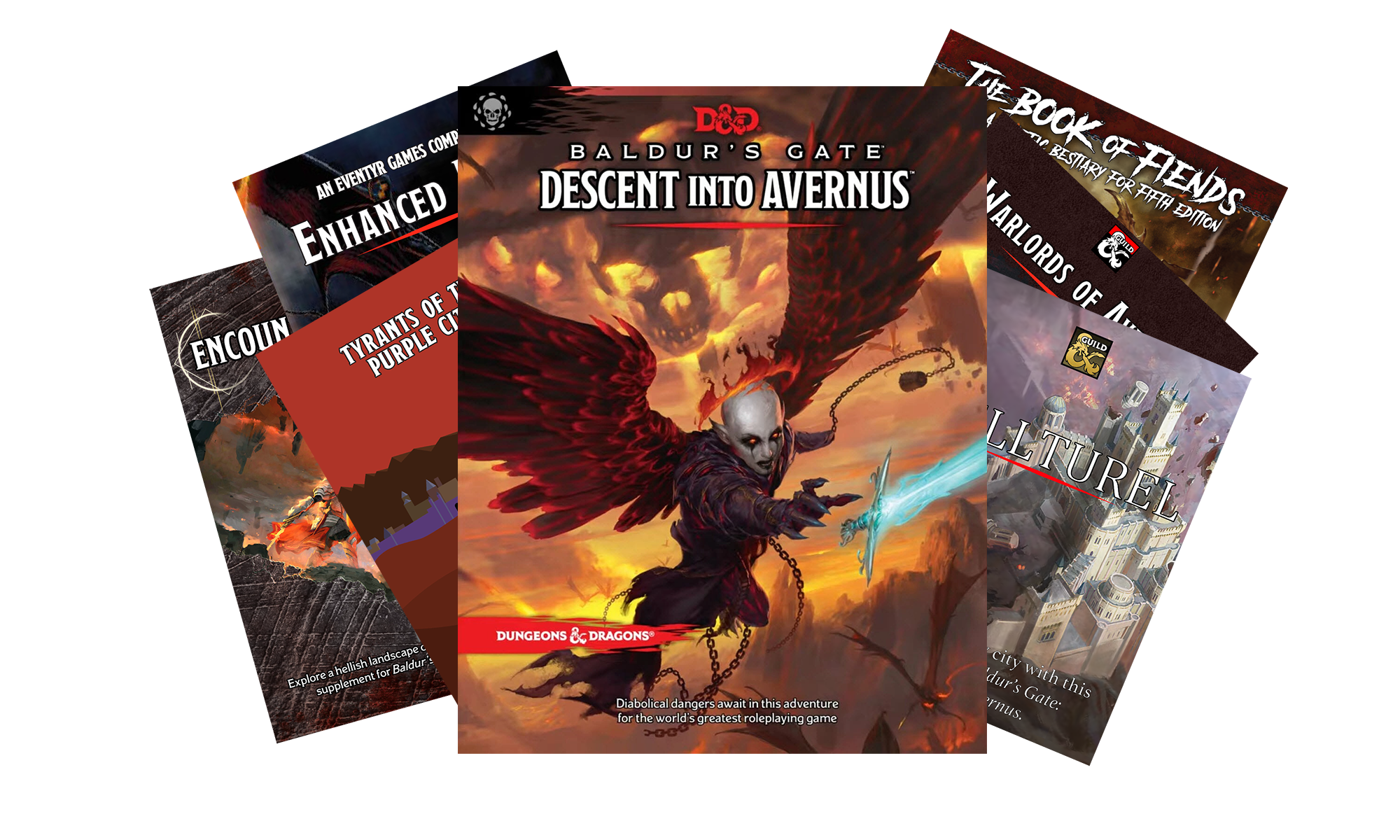
SESSION 30A: THE BREAKING OF THE DAWN
October 12th, 2008
The 16th Day of Kadal in the 790th Year of the Seyrunian Dynasty
Agnarr beat on the wall where the umber hulk had disappeared.
“Maybe it’s gone away to die,” Elestra suggested.
Agnarr took small comfort from that small hope, but pursuit was impossible and they didn’t dare to go any deeper into these unknown caverns in their current state. Nursing their wounds, they retreated back towards the Banewarrens.
When they returned to where Kalerecent was waiting for them, they found him with his sword drawn. Seeing that it was them, he sheathed his sword and hailed them. He had heard the sounds of combat and been worried for their fortunes.
They described their encounter with the lamia, the arrival of the reinforcements wearing bone rings, and their eventual triumph. Kalerecent nodded. “I’m not sure how many goblins there were, but I think you’ve disposed of those I fought before.”
“Except for the green-skinned crone who went through the door,” Ranthir said.
“Yes. Except for her.” Kalerecent’s face was grim.
But with the other creatures slain, Kalerecent felt the complex was secure enough that he was willing to return to the surface with Rasnir’s body… as long as some sort of watch was kept on the door. Tor had sworn himself to help Kalerecent in bearing Rasnir back to the Godskeep, but the others agreed to stay behind and keep a watch over the Banewarrens.
Kalerecent carried the body himself. Tor walked at his side. The others came as far as the mansion before bidding them goodbye.
Once Kalerecent was out of earshot, they returned to the closet where they had left the orc woman tied up. Yanking it open, they found her still bound and gagged inside.
They removed her gag and showed her the weapons and rings of her comrades. “We killed them,” Tee said. “We can kill you. Now tell us what you know.”
But the orc woman was reticent. She sneered. “You have only made it more certain that I will never speak to you.”
“Aren’t you speaking to us now?” Agnarr frowned.
Dominic leaned in close. “Can’t we speak to the dead?”
But the orc woman said nothing.
“I don’t think it’s working,” Elestra said.
“No, seriously, I’m asking: Can’t we speak to the dead?”
Tee gagged her again and shut the door.
THE GATES ARE SHUT
Kalerecent only had to carry Rasnir’s body as far as the Emperor’s Road. Once there, Tor was able to hail a carriage. (They had to pay the carriage driver a little extra to bear Rasnir’s body.)
They rode in silence down into the Temple District. As they were approaching the Street of a Million Gods, however, the carriage began to slow. They were still a few blocks away from the Cathedral.
Tor leaned out the window and looked up at the carriage driver. “What’s going on? Why are you stopping?”
“Some sort of disturbance, sir,” the carriage driver said. “We should be able to ride through, though.”
Tor could see it now: Clotted groups of people were streaming down the street in the opposite direction.
Kalerecent frowned. “I don’t like this.” He opened the door and stepped out of the carriage. To the driver he said, “Wait for us here. And guard the body of my friend with your life.” To Tor he said, “Are you coming?”
Tor nodded and climbed out of the carriage, as well. He tossed a few coins to the driver to “compensate for his pains” and followed Kalerecent down the street.
As they approached Discourse Street, the furrow of Kalerecent’s brow deepened. “The gates of the Godskeep have been shut.”
“Is that unusual?” Tor asked.
“I’ve been a knight of the Order for seven years. I’ve never seen them shut before.”
Something was wrong. Kalerecent led the way as they circled around towards the south gate of the keep. As they passed between two of the Cathedral’s outbuildings and emerged into the courtyard between the Cathedral and the Godskeep, they were met with a grisly sight: The south gate, too, had been shut and dozens of bloodied bodies were strewn across the grassy sward. Members of the Order wearing red sashes were moving between the bodies. Some where being healed… most of them were not.
Kalerecent stepped out into the open and Tor followed his lead. One of the red-sashed knights inspecting the corpses spotted them and stood up. “Halt!”
He approached with his sword drawn. Tor and Kalerecent stood calmly, careful to give no cause for alarm. As the knight drew nearer they raised their hands and displayed their rings. The knight relaxed slightly, but kept his blade on guard.
“What happened here?” Tor asked.
“Sir Kabel attempted to assassinate the Novarch.”
Running the Campaign: Cut on the Cliffhanger – Campaign Journal: Session 30B
In the Shadow of the Spire: Index
















